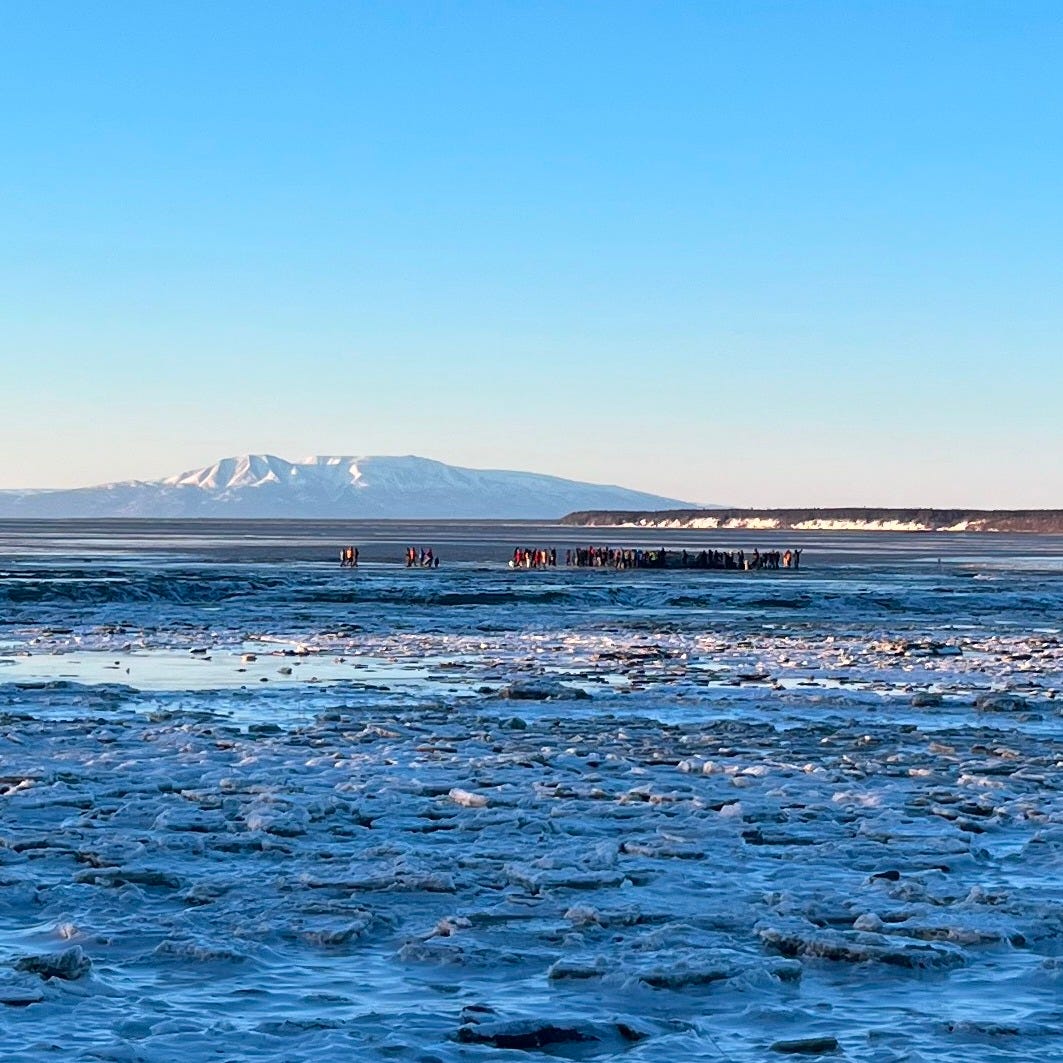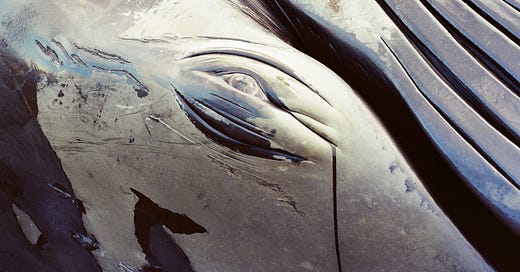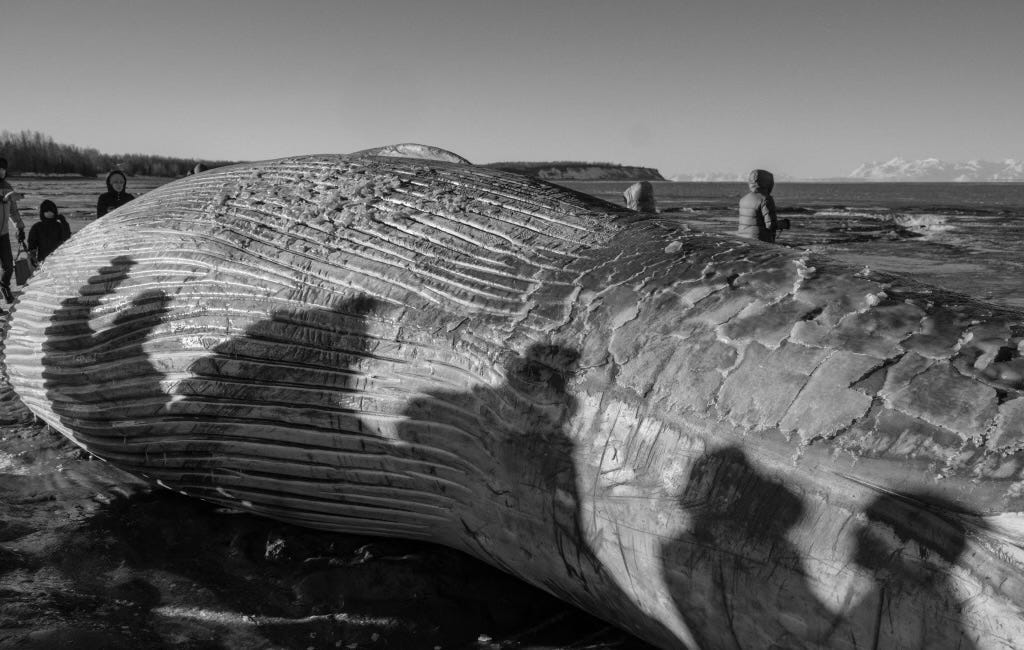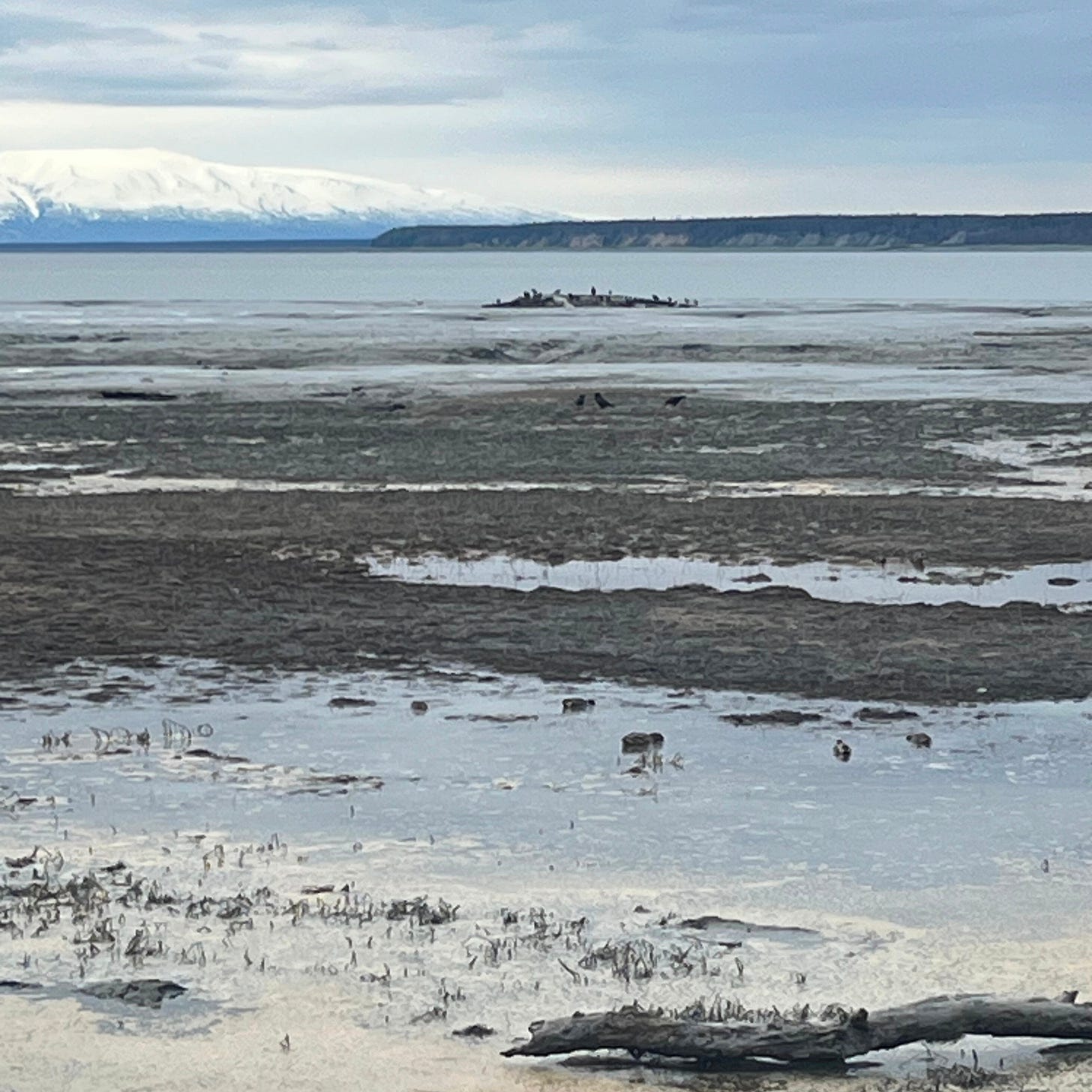Somehow I’ve cobbled it together. A Seussian balance of plates and hats held perched on the unicycle wheel.
This morning I walked by two trees so intertwined that at first I thought the pine had sprouted blooms. I want that, I said, and thought of my own roots.
We’ve reached the end of this eight-week challenge. It’s taken us from skiing to real estate, heartbreak to love. Time and volcanoes and energy, too.
I want to thank you for reading my experiment in pushing through. You won’t find me here next week—a break feels welcome and necessary. It was hard to publish eight weeks in a row. Jenna Park recently described how long it takes her to write her weekly newsletter, which reminds me that we should support the artists and writers we love.
Going forward I intend to keep some kind of regular schedule. Perhaps Thursdays, though perhaps not weekly. It’s been beautiful to hear from you across the void and I continue to welcome your thoughts.
Today we’ll revisit the whale. Please read part one of this tale to familiarize yourself, which is linked below.
Despite assurances to the contrary, the whale never washed away. It remained all winter atop the frozen mud as hordes marched to see its body while we could.
This spring it was decided that its bones would be displayed in a museum. I use the passive voice because I’m not sure who decided this, nor is it important. All we know is that the whale didn’t, and neither did its family. There was no whale will scrawled into the mud.
The mechanics of the bones’ removal proved challenging. An effort to slice away tons of fat while the mud was still frozen. Then, an early thaw made the mud no longer safe for humans to traverse. Without a way for humans to reach it the whale was, for a time, returned to the natural world.
Instead of humans, the carcass was flocked with birds. They sat atop its exposed ribs like gulls on the piles of a pier. Teenaged eagles guarded the bones and soared menacingly in their scruffy brown coats.
The humans tried to reach the whale by whatever means, to no use. They were about to give up on recovering the rest of the skeleton when a high tide pushed the carcass close to shore. The bones were harvested at low tide and, with the next day’s water, the body was released.
Thus ends the tale.
It strikes me that perhaps I forced the whale to become more than it was. To mean something about society and death instead of a collection of cells that happened to rest in that arrangement and that place.
Death rituals are for the living. What happens when we die is among the chief existential questions. Usually, the answer involves moving on. The soul exiting the body. What we do with the bodies reflects the living, not the dead.
Why is it okay, in terms of my moral outrage, for birds to sit on the whale but not humans? Why do I find it charming when juvenile eagles and magpies descend yet cringe at the sight of human children stomping in a pool of the whale’s blood?
I suppose it’s because I think we should know better. Because for most of our brief history, we’ve developed rituals to provide dignity for the lost life.
As soon as I say this, I picture mass graves and the capital punishment chair. We know better, but we also decide over and over again that only certain lives deserve dignity and only certain bodies should be treated with respect.
So again: why do I hold humans to a higher standard than birds?

Perhaps I was too quick to judge my fellow humans in their experiential quest. A rare encounter with a frozen immaculate beast.
I’m trying to emphasize commonality more than difference. Two trees that create an illusion of becoming a new tree altogether. Maybe a pine can bloom after all.
It’s okay to set standards for the behavior we tolerate. It’s also okay to adjust those standards as we learn and grow and change.
As the whale tells us, life is too short for hypocrisy. Life is too short for infighting at the expense of our greater good.
A friend got to photograph a different juvenile fin whale a decade ago after it washed ashore in Seward. It seems this tale, like most, is not unique. A beach, a child, a body. The rest of us deciding what to do.
I used to think I wanted a burial at sea. Tie stones to my feet and release me into the ocean. Now, I wonder how that’s different from a burial in the ground. Perhaps it doesn’t matter where my cells rest once I’m no longer in them. We can find dignity, or its lack, in any arrangement.
The whale has finally washed away, boneless and decomposed. Somehow I don’t think it noticed whether it was the birds or the humans who stood on its neck. Somehow I don’t think that mattered one bit.







fierce and reflective <3
Thank you for the followup to the whale. What a wonderful rumination and reflection on its life and death.